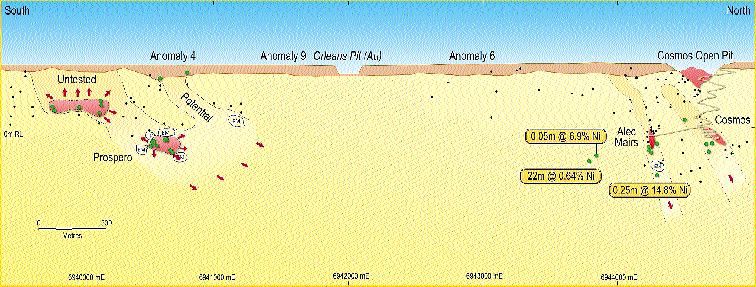Perth, Western Australia — The rapid growth of Australian nickel production and proving up of new deposits is very much in the hands of junior companies that four years ago were either not born or just another plugger in the exploration stakes.
While
Who better to reflect this than Kerry Harmanis, the lawyer turned mining entrepreneur, whose
It was a rags-to-riches case for a struggling gold explorer in the northeastern goldfields of Western Australia. In turning a focus to the wide and long nickel-mineralized belt known as the Agnew-Wiluna corridor, Jubilee hit real paydirt — initial results that produced doubters but within months nothing but disciples.
The Cosmos discovery had two wonderful ingredients — width and grade — and with an offtake agreement with
As the Cosmos pit deepened, the Cosmos Deeps was discovered and, more recently, the Alec Mairs zone (named after the Jubilee chairman and former business editor who died two years ago). It is clear Cosmos is the best thing since sliced bread — a uniquely Australian parlance.
As the profits came in, so Jubilee stepped up the exploration and paid
In 4.5 years of operation, Jubilee has had gross sales revenue of A$755 million, net profits of A$235 million, earnings per share of A$1.91, and dividend payouts of A$1.08 declared to date, representing an average annualized payout of 57%.
Commenting on the December quarter, Harmanis said mine grades were 6.85% nickel, reflecting mine scheduling for a slightly lower-grade part of the mine.
“With some ore parcels outperforming their geologically estimated grade, we still returned excellent mill feed grades of 7.13% nickel, with plant recoveries of 96.8% and plant availability of 98.7%,” he said.
Jubilee has also been alert corporately, snapping up an 18.35% equity and a strong board presence in
This fast move may have caught WMC short, for it has a 70% earning stake in the prospect, but then Australia’s nickel pioneer has been pedestrian in terms of corporate plays for years and not too forthcoming about its exploration — until it detailed discovery work on its own ground at Collurabbie along strike with Falcon. WMC has been more effusive in recent months since the takeover bid by
The attraction of Collurabbie is not just the healthy early nickel hits but the polymetallic nature of the core that has given intercepts at the Olympia deposit such as 23 metres of disseminated sulphides at the bottom of a hole with 1.9 metres grading 3.64% nickel, 2.77% copper, 0.14% cobalt and 6.95 grams total platinum group metals per tonne. Another hole hit 8 metres of 1.2% nickel, 1.6% copper and 4 grams combined platinum group metals per tonne.
The Falcon ground takes in 30 km of strike, with the WMC joint venture in the northern half and a joint venture with
— The author is a contributor to Australia’s Paydirt magazine.


Be the first to comment on "The best story in town: Jubilee Mines"